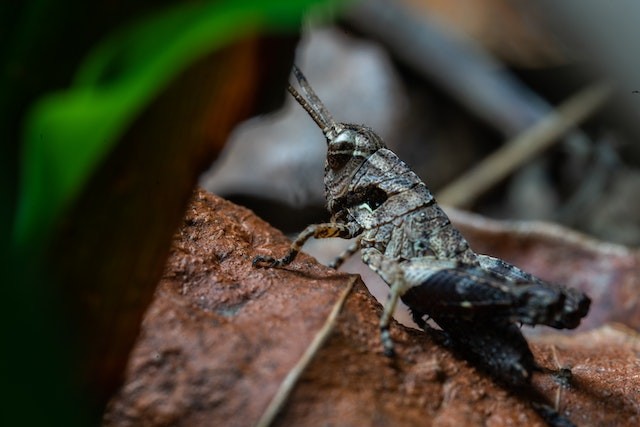
Millions of Cannibalistic Mormon Crickets Invade Nevada, Traps Residents in Their Own Homes
Millions of Mormon crickets invaded Nevada, leaving a terrible smell and forcing the residents to lock themselves inside their homes. They flocked to the properties and gardens of the locals.
Mormon Crickets Invade Nevada
According to the Daily Star, the insects have just invaded Nevada and are covering people's homes, lawns, and cars. The flightless insects reportedly have a "terrible smell."
Mormon crickets, believed to be active in Nevada for up to six years before going dormant once more, last plagued the state in 2019 and are known to consume one another as they swarm across an area.
One resident, Colette Reynolds, shared a video on TikTok showing a delivery package and uncountable numbers of insects, which may grow up to 2 inches long, all over her lawn.
Reynolds claimed to have witnessed the living creatures turning around to consume their buddies she had run over in the roadway. She exclaimed that she was a prisoner in her own house. She added that the crickets are "foul," "disgusting," and have an awful odor.
Another posted images of her house being entirely overrun by crickets, claiming that she sobbed the entire time she walked to her car, which was also covered.
Kerstin Ann Morales, a different resident of Nevada, posted a video of a road covered with crickets. Every inch of the road leading to the mountains was lined with crickets, converting the picturesque scene into an unreal and nightmarish one.
Her video features a man riding a motorcycle while dodging insects. The man is wearing a short-sleeved shirt, and crunching can be heard while they drive.
According to Jeff Knight, an entomologist with the Nevada Department of Agriculture, Mormon crickets are endemic to a number of states in the US's northwest.
These insects have one generation every year, so around July, they begin to lay eggs, which typically mature in the winter and emerge in the spring, Knight told KSL-TV.
Due to their gathering habits and propensity to discharge feces, the flightless creatures are emerging from years of hibernation and posing challenges in some areas of the state.
ALSO READ: Why Do Snakes Eat Themselves: 5 Reasons They Do
What's A Mormon Cricket?
Mormon cricket (Anabrus simplex) is a popular wingless insect in North America. It was previously a significant nuisance in the Great Plains, according to Britannica.
The advent of a flock of seagulls in Salt Lake City, Deseret (later Utah) in 1848 prevented the pest from completely destroying the Mormons' crops. The coulee cricket (Peranabrus scabricollis), found in large numbers in the Pacific Northwest, is a damaging pest to plants. Mormon and coulee crickets are controlled using insecticides and insecticidal baits; earlier control techniques involved digging ditches or erecting vertical metal barriers around crop plants.
The Mormon cricket is an extremely mobile bug despite lacking wings. The first four instars migrate briefly and wonder about a lot in quest of food and refuge. They don't travel far overall.
However, older instars and adults move in coherent bands in defined directions, covering between 0.5 and 1 mile per day and 25 and 50 kilometers in a single season. Since their wings are small and inadequate for flight, their only means of locomotion are crawling and hopping. Although Mormon crickets have been seen moving at night, they primarily move during the day when conditions are ideal (clear skies, 65 to 95 degrees Fahrenheit air).
When two bands come together, they merge into one larger band or keep moving in their respective directions and pass through one another, per Wyoming Agricultural Experiment Station Bulletin.
RELATED ARTICLE: Record-Breaking Giant Squid Caught in Hawaii, Fisherman Says It Can Make About 100 Plates of Calamari
Check out more news and information on Animals in Science Times.














